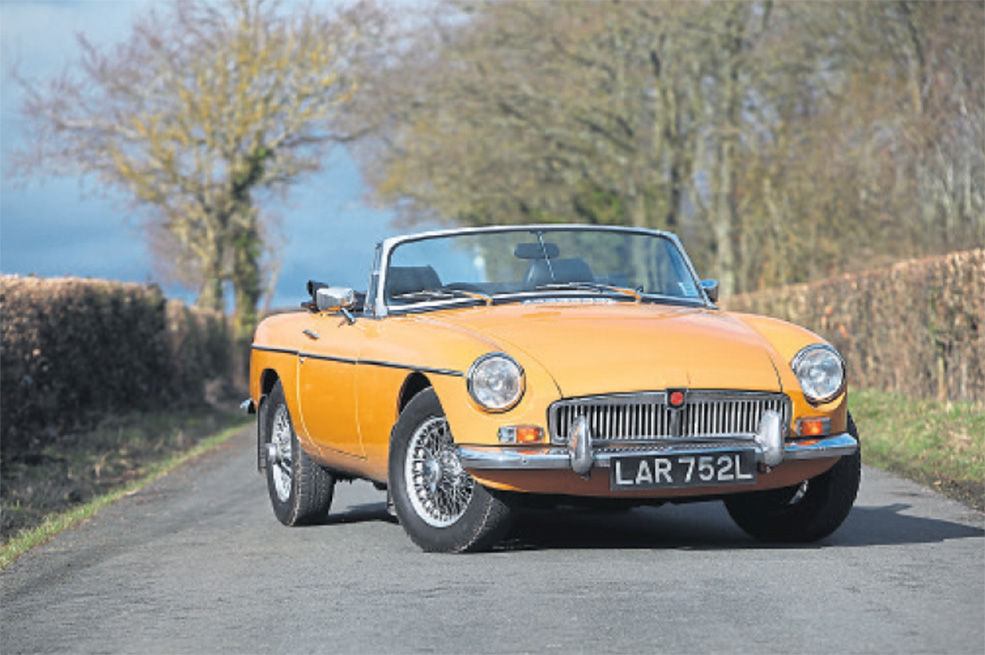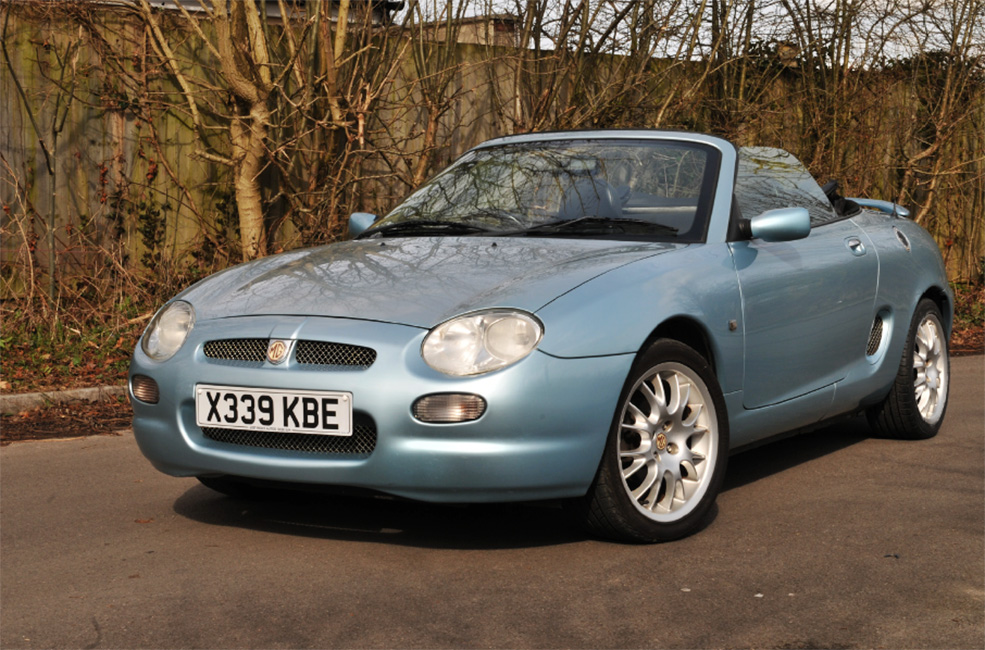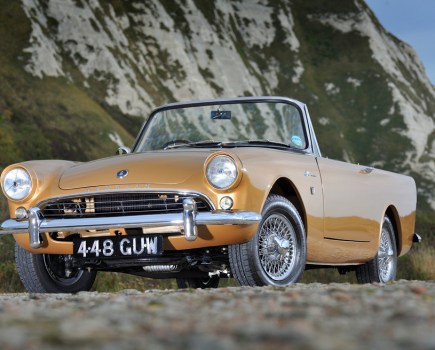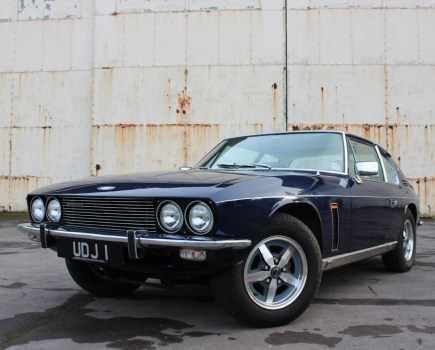Welcome to Old School vs New School where we visit the controversial subject of traditional classics compared to their more youthful equivalents. This time, the MGB versus the MGF…
Just as today’s paper is tomorrow’s chip wrappers, so each modern classic will eventually take its accepted place in the line-up of cherished classics at a car show of the future and we’ve picked another selection we reckon offer a good illustration of the changing tastes.
If you wish you’d cashed in when a 911 was yours for £8000 or even when an E-Type was £500 then here’s your second chance.

OLD SCHOOL – MGB
TECH SPEC
Engine: 1798cc
Power: 95bhp
Top speed: 106mph
Fuel consumption: 22mpg
Gearbox: four-speed manual
Walk into any pub, mention you’re into old cars and guaranteed someone nursing a warm beer will tell you they once owned an MGB. It’s a given. But there’s no reason to see that as a negative because it’s a car that simply oozes classic appeal from every orifice.
It was meant as a replacement for the MGA and featured much of its predecessor’s underpinnings, clothed in a smart new Don Hayter designed body. The roadster version was launched in 1962 and the Pininfarina-influenced MGB GT three years later.
The Mk2 MGB from ’67 was better, with dual circuit brakes, all-synchro gearbox, nicer seats and an alternator instead of a dynamo. The six-cylinder C roadster and GT were introduced at around the same time but, despite the period, it never received much ‘love’ and only lasted until 1969.
The Mk3 followed in ’71 with a revised interior, the unpopular recessed grille (from ’69) went in ’72 and then, in ’74, polyurethane-covered steel bumpers replaced the more delicate chrome affairs and ride height was raised 1.5in in order to comply with strict US safety regulations. It gained a bit of weight, too, which didn’t do much for its handling. On the plus side, overdrive was made standard in ’75 and other little improvements were carried out before production finally came to a close in October 1980.
WHAT’S THE APPEAL?
It’s a car that’s steeped in nostalgia and one that instantly ticks lots of boxes. The roadster offers all the usual hood-down thrills, and if you don’t like draughts then the cosy GT offers the no-brainer alternative.
It handles OK, it’s quick enough and behind the wheel there will always be that warm and comfy old car feel. The best bit is that you can choose a car from a production lifespan that lasted 18 years so if you want an early chrome bumper model for high days and holidays, fine, but if you want a later rubber bumper model you can drive every day then that’s possible too.
OWNING THEM
A huge part of the pleasure of owning an MGB is that it’s incredibly DIY friendly. In reality, there’s little that can’t be done on the driveway with a decent set of AF sockets, trolley jack and some sturdy axle stands. Furthermore, there’s unparalleled club support MG Car Club, MG Owners’ Club, and a vast number of specialists selling parts. And nothing’s expensive; to give you an example, an oil filter is a paltry £3.92 from Moss Europe!
BUYING THEM
• Rust can attack the inner/outer sills, front scuttles, windscreen pillars, doors and the tops of the rear wings
• B-Series engines are strong; look for 60-70psi when warm. Tappet rattle is common
• Overheating will be due to silted up rads/ head gasket issues
• Front kingpins wear, so get the car up on a lift and check them out
• Watch for slipping clutches, worn synchro and jumping out of gear
• Sympathetic upgrades (single battery, telescopic damper kit, etc) are desirable
VALUES
The good news is that rubber bumpered GTs are still being advertised for £1500, with topless cars from the same era starting at about a grand more. These will likely be basket cases, though, and unless you are able to do lots of work yourself, it will pay to spend £5000- £6000 for a decent one. Realistically, you’ll pay between £8000-£10,000 for a chrome bumpered GT and £12,000- £15,000 for a roadster version which chrome blades. That said, we’ve seen them for £20,000.
INSURING A MGB ROADSTER
To cover a 1972 MGB roadster worth £8000 you’re looking at £75 with £100 accidental damage, fire and theft excess through Adrian Flux.
Quotes are based on a 45-year-old male, second vehicle. The car is garaged, covers 3000 miles a year and lives in an SP2 postcode. He has no claims or convictions, is a club member, and is employed as a marketing manager. Comprehensive cover quotes were supplied by Adrian Flux and include free legal cover cover and optional agreed value. You can get your own quote at Adrian Flux or on 0800 369 8590.

NEW SCHOOL – MGF
TECH SPEC
Engine: 1796cc
Power: 120bhp
Top speed: 120mph
Fuel consumption: 41.3mpg
Gearbox: five-speed manual
Having established a reasonably successful range of saloons by the mid-1980s, Austin Rover was keen on promoting the MG brand by means of a two-seater sports car. And why not? After all, everyone else was doing it.
A front engine, front-wheel drive MG F-16 concept was developed but uncertainty over the company’s finances put a lid on things. With the British Aerospace buyout in 1988 and the launch of the Mazda MX-5, however, Austin Rover bosses were given a renewed confidence that there was indeed a market for such a car and the open top two-seater MG was finally given the green light.
Tweaks were made to the original concept which now included a traditional MGB-like grille, and other components of the running gear were chosen, namely Hydragas suspension and the talented 1.8 K-Series engine, the latter given a useful shot in the arm a year after production started courtesy of variable valve control (VVC).
The MGF was finally launched in March 1995, the press loved it and sales were brisk. By 2001, having broken from the shackles of BMW ownership, the range was extended with a new, entry level 1598cc 112bhp model and the limited edition Trophy 160SE with uprated engine and suspension. A total of 77,269 MGFs were produced before it made way for the TF with its conventional suspension which subsequently lasted until 2005.
WHAT’S THE APPEAL?
Grippy mid-engined handling, eager performance and the prospect of being able to run it on a shoestring as an every day ‘new’ classic, so what’s not to like about the MGF? Not only that but it’s a car that now shines out from a particularly dark period in British car-making history, and for that reason alone it’s of interest.
Moreover, being relatively ‘modern’ it’s comfortable and refined with lots of newer car niceties such as ABS, power steering and air conditioning available. So it looks like a classic, but has all the attributes that make it possible to enjoy on a regular basis, even on longer motorway journeys.
OWNING THEM
Suffice to say, the engine’s mid-car position makes routine servicing a bit more involved. You can get to the coolant and dipstick, and there is just about enough room to extract the air filter via the boot, but access to the plugs and oil filler requires you to unfasten the lower section of the hood and remove a plate covering the top of the engine.
That aside, an MGF will be a doddle to own as parts are all readily available and surprisingly affordable. Best of all, there’s all manner of specialists offering handy accessories and upgrades, so there’s no limit to the amount of potential to fettle.
The Hydragas system, taken from the Metro, is actually very good and generally trouble free so there’s no need to worry unnecessarily unless there’s an obvious problem
BUYING THEM
• Rover’s K-Series unit is prone to head gasket issues, so check a multi-layer steel (MLS) gasket’s been fitted
• Timing belts require changing every 60,000 miles
• Damp start problems are common; cured by new HT leads and/or ignition coil packs
• Rattle on a VVC model points to the control unit
• Look for Hydragas issues, namely the car sitting down on one side which points to a leak somewhere
• Hoods can let in water but they’re not expensive to replace
VALUES
We’ve saved the best bit until last because, believe it or not, you can still buy an MGF for under a grand. OK, it might need some tidying and a few mechanical jobs doing to bring it up to scratch but, as we’ve said, nothing is likely to cost that much to fix. Even late, low mileage MGFs will struggle to fetch more than £3000 – and there’s lots of cars out there to choose from; it’s a buyer’s market at the moment so you can afford to be choosy. However, we can’t see this situation lasting much longer – so don’t hold off buying one.
INSURING A MGF
To cover a 1997 MGF worth £2000 you’re looking at £150 with £150 accidental damage, fire and theft excess through Adrian Flux.
Quotes are based on a 45-year-old male, second vehicle. The car is garaged, covers 3000 miles a year and lives in an SP2 postcode. He has no claims or convictions, is a club member, and is employed as a marketing manager. Comprehensive cover quotes were supplied by Adrian Flux and include free legal cover and optional agreed value. You can get your own quote at Adrian Flux or on 0800 369 8590.
OLD SCHOOL VS NEW SCHOOL SERIES
Thinking of getting your hands on a modern classic car? Well keep an eye on Classics World for the next of our old school vs new school classics feature, where we will visit the controversial subject of traditional classics compared to their more youthful equivalents.









